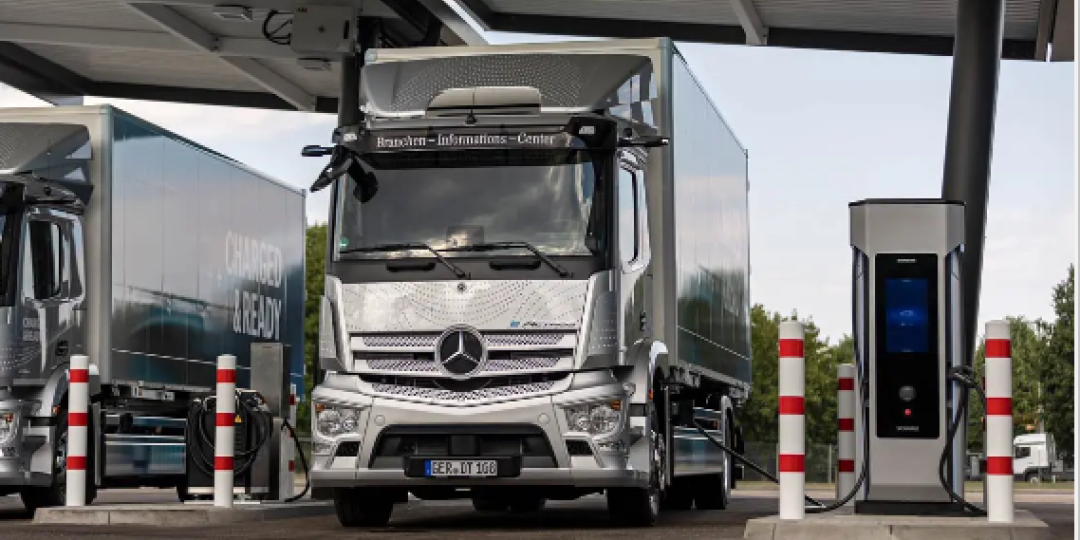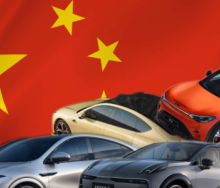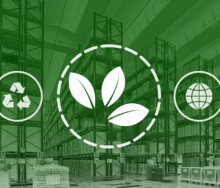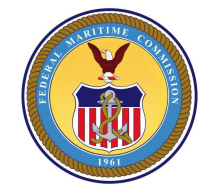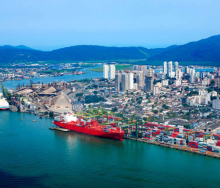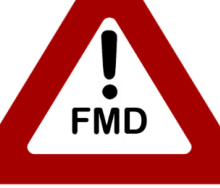Daimler Truck on Monday confirmed what many in the transport industry have suspected for some time: the electronic vehicle (EV) market is racing ahead of itself and decarbonisation targets are not only costly but unsustainable.
Thing is, it’s not the fault of original equipment manufacturers (OEMs).
The necessary engineering nous was on point, said Dr Andreas Gorbach, member of the board of management at Daimler Truck AG and head of the manufacturer’s division for truck technology.
Speaking on the eve of Internationale Automobil-Ausstellung (IAA) Transportation, one of Europe’s most anticipated annual road freight shows, he argued that the very people responsible for creating an enabling environment for EV transport were also the enforcers of CO₂ emission legislation, ready to pounce with punishing tolls and taxes.
Faced with regulations stipulating that 15% of new fleet sales in the EU must be net-zero by 2025, scaled up to 45% by 2030, Gorbach said the EV grid required to support electric truck progress was simply not keeping pace.
“The biggest dilemma is with infrastructure. In Europe there are six million trucks on the road, burning 60 million tonnes of diesel every year,” said Gorbach.
To replace that, so that the 2030 regulatory target is met, 35 000 high-power charging stations will be required.
“Today we have 200.”
Gorbach said on the hydrogen end of support for EV transport, developments weren’t looking much better, with about 2 000 refuelling stations required but only about 100 to 120 in existence.
To realise 2030 net-zero emission targets set by the European Parliament would require building 400 high-power chargers and 30 refuelling stations every month, Gorbach said.
“But it’s not happening.”
He said although net-zero efficiencies had been implemented and embraced in countries like Germany, most of the EU’s member states were lagging behind.
As a result, the total cost of ownership of smart trucks like Daimler’s Mercedes-Benz eActros 600 is affected by cost parities not aligning with the general and growing perception that it’s not worth investing in expensive equipment.
In the end, lagging sales on the net-zero side were weighing hard on OEMs, Gorbach said, presenting manufacturers like Daimler with “extreme if not existential penalties”.
He said ultimately unrealistic penalties charged to OEMs for not meeting new fleet net-zero targets would be passed on to clients, affecting the price of consumer goods and further driving up already high living costs across the EU.
“This industry is at the moment facing the biggest challenge we have ever seen,” said Gorbach.
“Take a typical truck stop today. Fifty trucks fill their diesel tanks in one hour. If you want to fill the battery of the eActros 600 in one hour, you need 700 kilowatt charging power times 50; that’s 35 megawatts, including the space to park the vehicles. It’s a major investment.”
Asked if the regulatory environment driving net-zero emissions ought to be urgently revisited, Gorbach answered with a curt “yes”.
He said it was time for politicians and decarbonisation policymakers to take a step back and assess what had been done and what could be feasibly accomplished, hopefully realising that it was not OEMs that were falling behind but the supporting infrastructure.
“There are firework products out there in serious production. The bottleneck is with infrastructure. If the infrastructure does not pick up as fast as required, there will not be enough zero-emission trucks in the market to comply with regulations.”
As a matter of urgency, Gorbach recommended that penalties and targets should be reduced and annual assessments done to ensure that OEM progress and the establishment of EV grid infrastructure were synchronised.
Gorbach said that instead of catching up with OEM progress by providing the necessary infrastructure, net-zero regulatory authorities were heaping “draconian penalties” on manufacturers like Daimler for not meeting smart truck sales targets.
“They’re watching us fail.”
